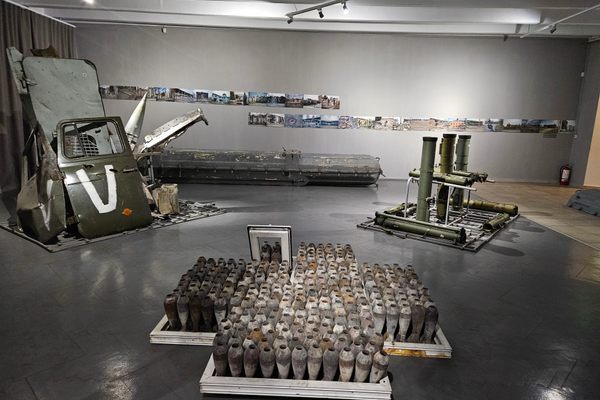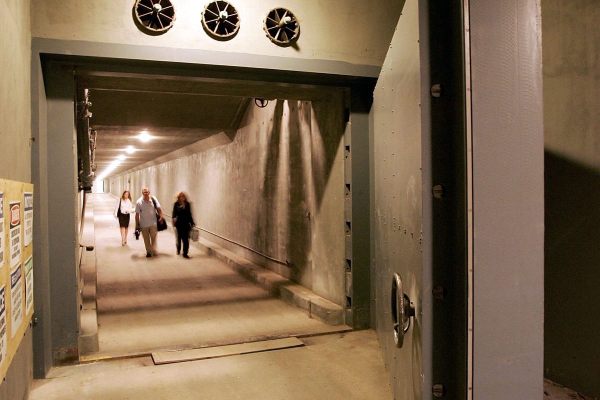‘Atomic Annie’ Was the World’s First and Only Nuclear Gun
Twenty were made, but only one fired a nuclear shot.

Plenty of potential apocalyptic horrors came out of the Cold War, but the atomic cannon is somehow especially unsettling. The giant gun was able to fire a nuclear weapon with a range of 20 miles, and could eradicate a sizeable enemy force in an instant.
Luckily, it was only fired once. But you can still see the gargantuan, 85-ton, 84-foot-long weapon at Fort Sill in Lawton, Oklahoma. A plaque attached to a commemorative rock alongside the 280 mm motorized gun and its transporters details the development of “Atomic Annie,” as it’s known.

The gun was created by the American military over a period of eight years, with a prototype even included in the procession of Dwight D. Eisenhower’s inauguration. On May 25, 1953, at 8:31 am, more than 3,000 military spectators watched from 5,000 yards away as an atomic artillery round was shot—for the first and last time—across the desert rock of the Nevada Test Site.
Nine seconds later and just over seven miles away, “the shell that could wipe out an enemy division exploded on target with a roaring violence equal to 15,000 tons of TNT,” throwing debris 500 feet, the plaque states. The “milestone in military history and in the advancement of nuclear weaponry” erupted in a “churning mass of heat and flame that surrounded the core of the atomic fireball.”

After the successful test, 20 of the atomic cannons were produced, each at a cost of $800,000 dollars. They were sent to Europe and Korea, but never saw action. Only eight now survive, including the original Atomic Annie used in the test. As another grim side note to what could have been a weapon in the most devastating of land wars, the original Atomic Annie actually got mixed up with its backup, “Sad Sack.” When it was discovered that it was Sad Sack at Fort Sill, the real first atomic gun was tracked down—in Germany. But as it was being relocated, it fell off a mountain road and killed two soldiers. As for Sad Sack, it went to the Smithsonian, and since 1964 Atomic Annie has resided in Oklahoma, an inert reminder of the potential of war.
This story was updated with minor edits on November 7, 2018.























Follow us on Twitter to get the latest on the world's hidden wonders.
Like us on Facebook to get the latest on the world's hidden wonders.
Follow us on Twitter Like us on Facebook